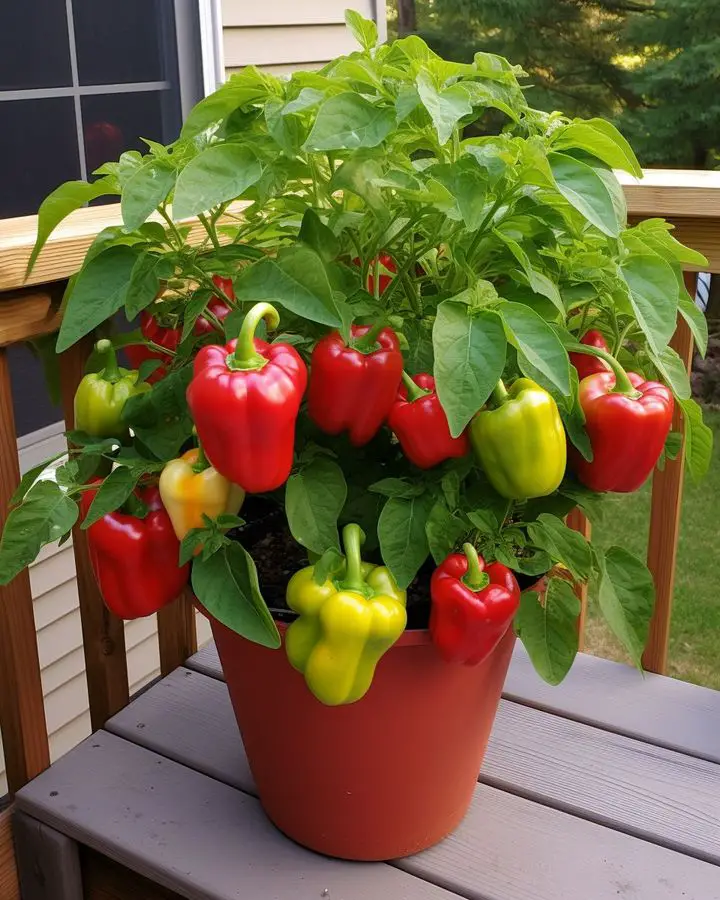Bell peppers are a delightful addition to any garden, known for their vibrant colors and crisp, juicy texture. Growing these delicious vegetables requires some know-how, but with the right information, you can enjoy a bountiful harvest. Here’s everything you need to know to grow bell peppers successfully.
Choosing the Right Variety
Types of Bell Peppers
Bell peppers come in various colors, including green, red, yellow, and orange. Each variety has its unique flavor and nutritional benefits. Consider what you’ll use them for when choosing which types to plant.
Seed Selection
Opt for high-quality seeds from reputable suppliers. Look for varieties labeled as disease-resistant to ensure a healthier crop.
Preparing the Soil
Ideal Soil Conditions
Bell peppers thrive in well-drained, loamy soil with a pH between 6.0 and 6.8. Test your soil and amend it as necessary to achieve these conditions.
Enriching the Soil
Incorporate organic matter, such as compost or well-rotted manure, to improve soil fertility and structure. This provides essential nutrients for your bell pepper plants.
Planting Bell Peppers
Starting Seeds Indoors
Start seeds indoors 8-10 weeks before the last expected frost. Sow seeds 1/4 inch deep in seed-starting mix, keeping them warm and moist until they germinate.
Transplanting Seedlings
Transplant seedlings outdoors after the danger of frost has passed and the soil has warmed. Space plants 18-24 inches apart in rows 24-36 inches apart to allow for proper air circulation.
Caring for Your Plants
Watering
Keep the soil consistently moist but not waterlogged. Water deeply once or twice a week, depending on weather conditions. Mulching around the plants can help retain moisture.
Fertilizing
Feed your bell peppers with a balanced fertilizer every 4-6 weeks. Avoid high-nitrogen fertilizers, which can lead to excessive foliage growth at the expense of fruit production.
Staking and Support
Bell pepper plants can become heavy with fruit, so provide stakes or cages to support the plants and prevent them from toppling over.
Pest and Disease Management
Common Pests
Watch for pests like aphids, spider mites, and pepper maggots. Use organic insecticidal soap or neem oil to control infestations.
Disease Prevention
Prevent diseases such as blossom end rot, bacterial spot, and powdery mildew by ensuring proper spacing, watering at the base of the plants, and removing any affected foliage promptly.
Harvesting Bell Peppers
When to Harvest
Harvest bell peppers when they reach their full size and desired color. Green peppers can be picked earlier, while red, yellow, and orange peppers require more time to mature.
How to Harvest
Use a sharp knife or scissors to cut the peppers from the plant, leaving a small portion of the stem attached. Handle them carefully to avoid bruising.
Storing and Using Bell Peppers
Storage Tips
Store harvested bell peppers in the refrigerator. They can last up to two weeks when kept in a plastic bag in the crisper drawer.
Culinary Uses
Bell peppers are versatile in the kitchen. Enjoy them fresh in salads, stuffed, roasted, or added to various dishes for a burst of color and flavor.
By following these tips, you can grow juicy and crunchy bell peppers that will enhance your meals and bring vibrant color to your garden. Happy gardening!
